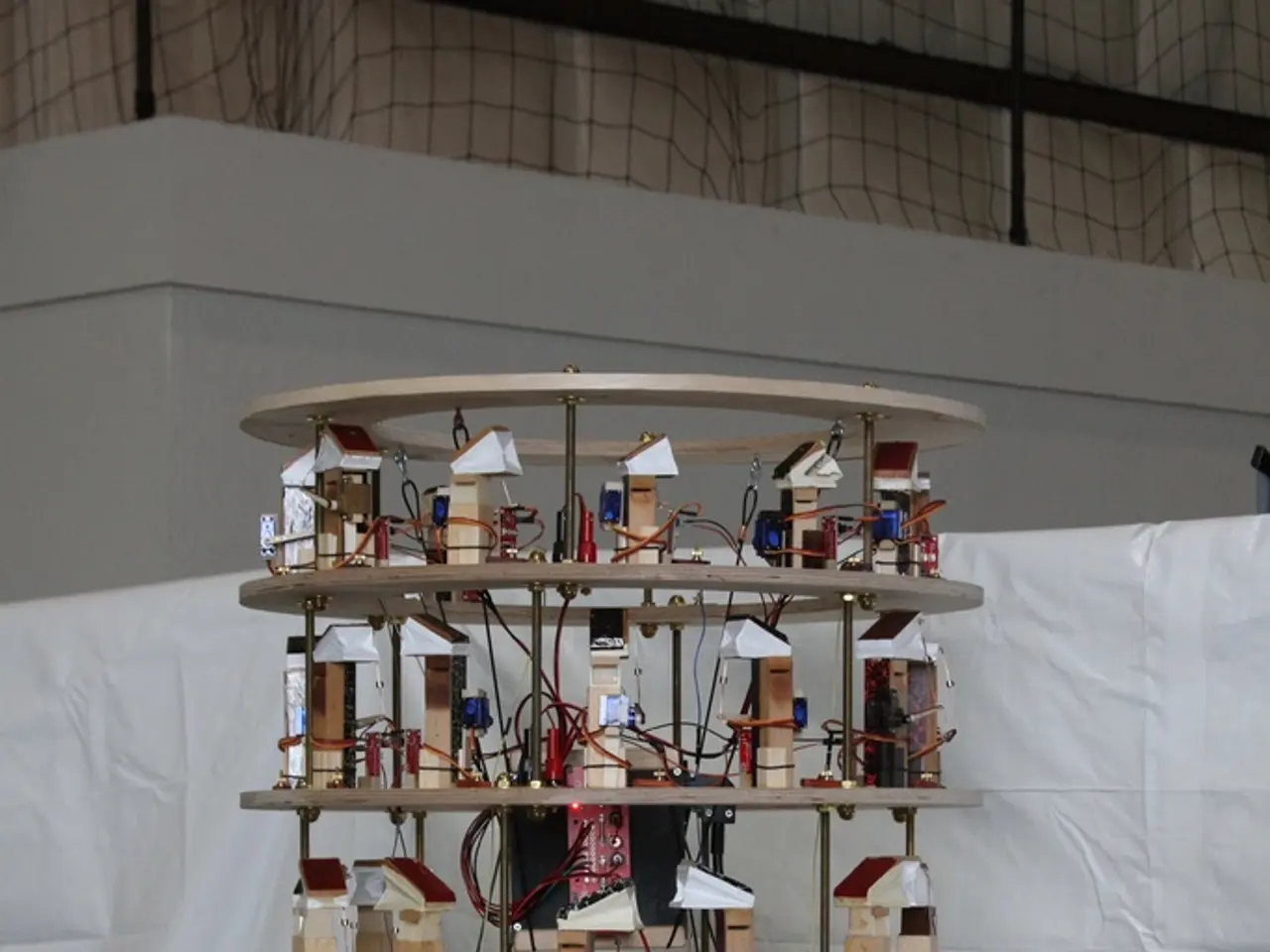"Ken Wyatt's PCB Design for Minimizing Electromagnetic Interference"
In the realm of electronic product design, understanding and managing electromagnetic interference (EMI) is crucial for creating high-performance, efficient, and compliant products. A webinar titled "PCB Design for Low EMI" presented by Ken Wyatt, Principal Consultant at Wyatt Technical Services LLC (Colorado), aims to equip designers with the knowledge to tackle this challenge effectively.
The webinar serves as a guide for designers who want to create low-EMI boards from the outset, promising to help them avoid common design issues that often lead to radiated emissions, radiated immunity, and electrostatic discharge (ESD) compliance failures.
The cross-section of a standard microstrip, consisting of a trace, dielectric space, and a return plane, forms the foundation of this discussion. The webinar delves into the significance of signal propagation in boards, explaining that for AC circuits, the movement of electrons needs to be understood as transmission lines, not just simple wires.
The webinar covers topics such as signal integrity issues, understanding transmission lines and controlled impedance, the selection process of high-speed PCB materials, and high-speed layout guidelines. It emphasizes the importance of reducing circuit loop areas, but also highlights the necessity of understanding how signals propagate in boards to achieve optimal results.
Key strategies for low-EMI PCB design include optimizing component placement and signal routing, controlling signal integrity and trace design, understanding and managing return current paths, using dedicated ground and power planes, applying decoupling and filtering, and designing for field confinement.
For low-frequency signals, the return conduction current path is relatively spread out along the return plane and mostly takes a direct path from load back to the source. In contrast, for high-frequency signals, the return conduction current path is relatively confined along the return plane and directly underneath the signal trace. This difference in behaviour is crucial for proper design.
The signal in the form of an electromagnetic wave travels through the dielectric space between the trace and return plane in a standard microstrip. The H field flux wraps around the trace, while the E field is mainly concentrated between the trace and return plane.
Understanding how digital signals propagate in PC boards is essential for designing low-EMI boards. Proper board design for lowest EMI requires understanding how signals move via electromagnetic fields. The path of least resistance is important for low-frequency signals, while the path of least impedance is important for high-frequency signals.
Ken Wyatt, with over 10 years of experience as a consultant, shares his expertise in this webinar, making it an invaluable resource for designers looking to gain a competitive edge in designing low-EMI boards. The guide titled "High-Speed PCB Design Guide" further supports this learning, with 8 chapters, 115 pages, and a 150-minute read, providing a comprehensive understanding of the topic.
In summary, effective low-EMI PCB design hinges on disciplined signal routing with controlled impedance, meticulous return path design (ensuring minimal loop area and proper reference planes), strategic component placement, and comprehensive grounding and decoupling strategies. By following these measures, designers can ensure that both low-frequency and high-frequency signals propagate cleanly with minimal electromagnetic emissions.
The webinar, "PCB Design for Low EMI," addresses the importance of understanding controlled impedance in high-speed PCB technology, which is critical for managing signal integrity issues and optimizing signal propagation in data-and-cloud-computing applications. The guide titled "High-Speed PCB Design Guide" further explores this topic, underlining the crucial role of technology in achieving low EMI with disciplined signal routing, meticulous return path design, strategic component placement, and comprehensive grounding and decoupling strategies.




